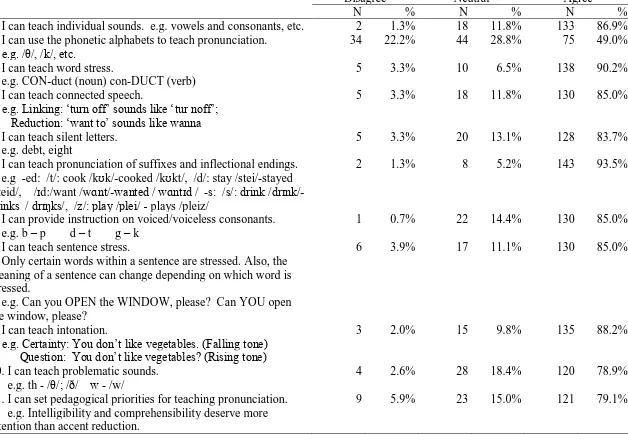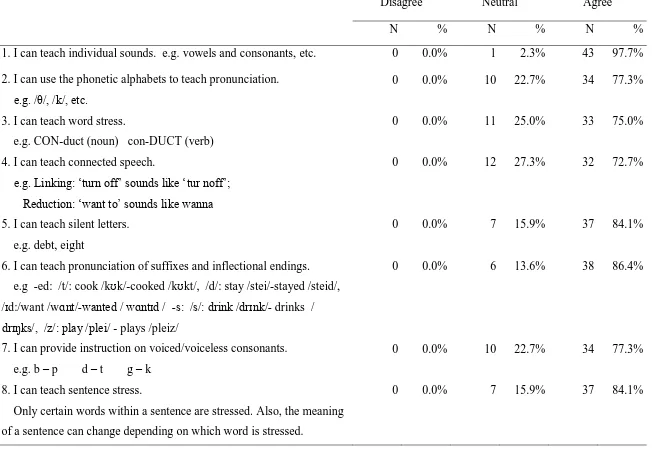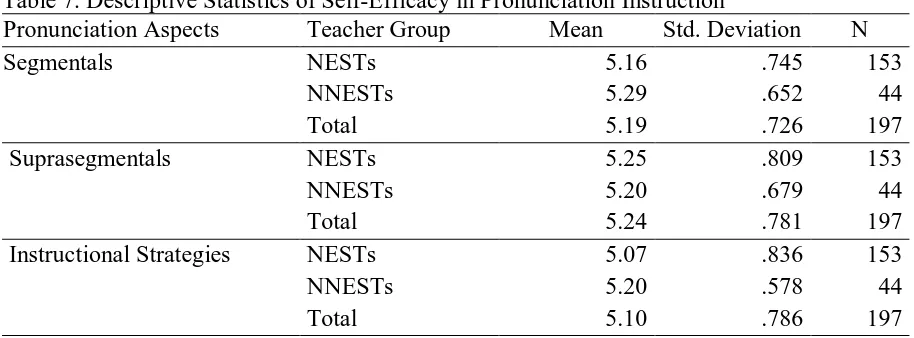English Language Teachers' Required Knowledge and Self-Efficacy Beliefs about Pronunciation Instruction
Full text
Figure
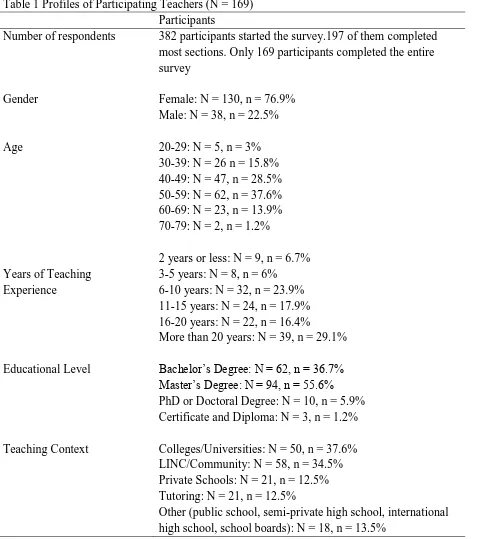
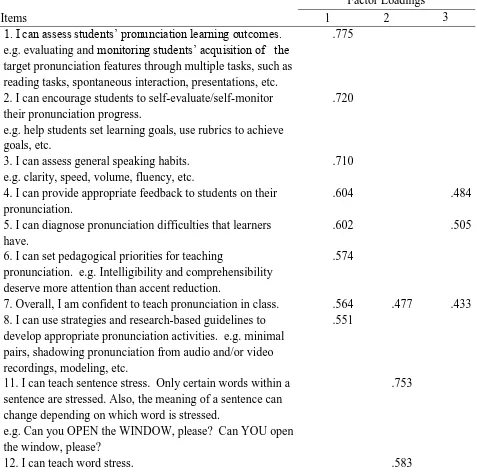
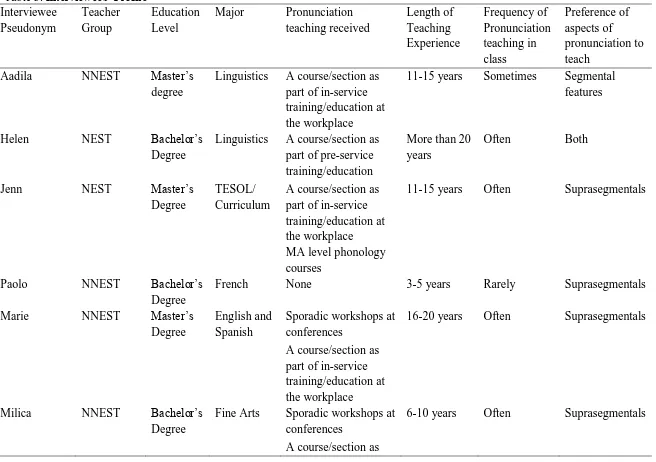
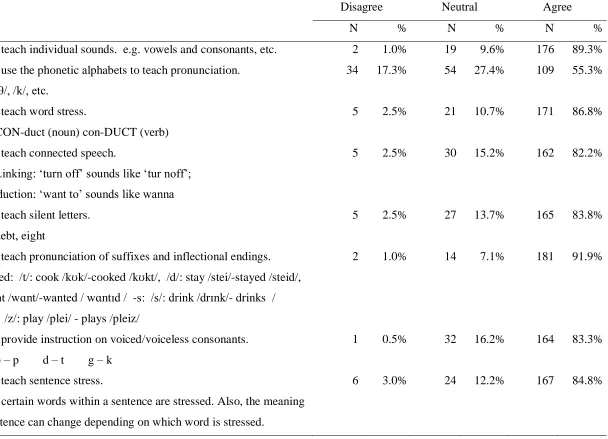
Outline
Related documents
Ticor ’s language that state action immunities are disfavored. We argue, however, that the FTC’s success in arguing that the “clear articulation” prong was not met would be much
Rather, it is argued, the availability of credit and the quality of balance sheets are important determinants of the rate of investment” (Blanchard and Fischer [1989], emphasis
Learned counsel appearing for the petitioners has submitted that on other occasions, the respondents have read and applied the policy and the said instructions in the manner
To determine whether imprinting of Ube3a in neurons of the mouse CNS reduces the dosage of Ube3a relative to other tissues where Ube3a is biallelically expressed (non- CNS),
The Credential tool lets the user view and copy the API key used to setup the In- House Relay and to download the X.509 SSL/TLS certificates to set up data source devices to
Presentation at Social Cognition meeting of the Kurt Lewin Institute [Dutch Graduate School for Social Psychology] , Utrecht University, The Netherlands.. Nonconscious motivation
Under the former Rules of Court, the expert’s file was protected by lawyer’s brief privilege until the expert was tendered as a witness at trial or his or her written report
While serving in the Treasury Department, I had the honor of working with dedicated, creative and diligent public servants on policy initiatives and diplomatic engagement to
